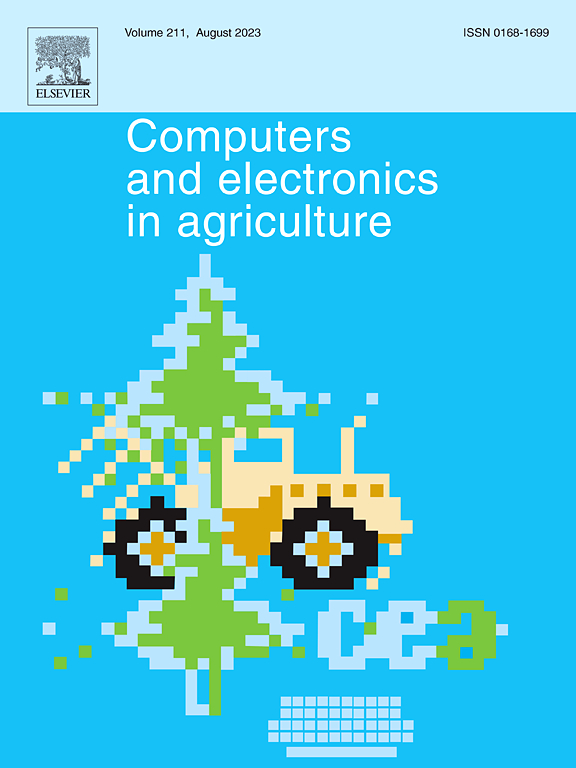红外热像仪用于农药表面活性剂配方植物叶片覆盖面积的精确测量
IF 8.9
1区 农林科学
Q1 AGRICULTURE, MULTIDISCIPLINARY
引用次数: 0
摘要
在农药配方中合理使用表面活性剂添加剂是降低环境风险、保障食品安全的重要一步。准确测量喷雾液滴在叶片上的润湿面积和寿命是优化表面活性剂浓度的基础。红外热像仪对薄膜蒸发引起的温度波动具有很高的灵敏度,便于对润湿区域进行精确检测。本研究比较了红外和光学方法测定表面活性剂溶液在1 ~ 5CMC浓度范围内在大麦叶片和模型表面上的润湿面积。研究结果表明,红外热像仪检测到的润湿面积是可见光谱范围内测量的4.6倍。此外,在红外范围内,湿膜的寿命延长了1.5倍。这允许对最佳表面活性剂浓度的估计进行重大修正,该浓度被定义为有效润湿面积和液滴寿命对表面活性剂浓度依赖性的线性近似的交点。研究发现,大麦叶中有机硅表面活性剂的最佳浓度范围是生产厂家推荐范围的一半,而杀虫剂的最佳浓度范围低于推荐水平。所提出的基于红外热成像确定最佳表面活性剂浓度的方法可用于完善和调整有机硅表面活性剂在农药溶液中使用的监管框架。本文章由计算机程序翻译,如有差异,请以英文原文为准。
Infrared thermography for precise measurement of coverage area of plant leaves with pesticide surfactant formulations
The rational use of surfactant additives in pesticide formulations is an important step toward reducing environmental risks and ensuring food safety. Accurate measurement of spray droplet wetting area and lifetime on leaves is fundamental for optimal surfactant concentration estimation. The high sensitivity of infrared thermography to temperature fluctuations induced by evaporation of thin films facilitates the precise detection of the wetting area. The present study compared the infrared and optical methods for determining the wetting area for surfactant solutions at concentrations ranging from 1 to 5CMC on barley leaves and model surfaces. The findings demonstrate that the infrared thermography detects up to 4.6 times larger wetting area compared to that of measured within the visible spectral range. Furthermore, the lifetime of the wetting film is detected to be 1.5 times longer in the infrared range. This allows a significant correction in the estimation of the optimum surfactant concentration, which is defined as the intersection point of the linear approximations of the dependence of the effective wetted area and the droplet lifetime on surfactant concentration. The range of optimal organosilicon surfactant concentrations obtained in the study on barley leaves for fungicides was found to be the half the range recommended by the manufacturers, while for insecticides it was below the recommended level. The proposed methodology for determining optimal surfactant concentrations based on the infrared thermography can be apply to refine and adapt the regulatory framework for the using of organosilicon surfactants in pesticide solutions.
求助全文
通过发布文献求助,成功后即可免费获取论文全文。
去求助
来源期刊

Computers and Electronics in Agriculture
工程技术-计算机:跨学科应用
CiteScore
15.30
自引率
14.50%
发文量
800
审稿时长
62 days
期刊介绍:
Computers and Electronics in Agriculture provides international coverage of advancements in computer hardware, software, electronic instrumentation, and control systems applied to agricultural challenges. Encompassing agronomy, horticulture, forestry, aquaculture, and animal farming, the journal publishes original papers, reviews, and applications notes. It explores the use of computers and electronics in plant or animal agricultural production, covering topics like agricultural soils, water, pests, controlled environments, and waste. The scope extends to on-farm post-harvest operations and relevant technologies, including artificial intelligence, sensors, machine vision, robotics, networking, and simulation modeling. Its companion journal, Smart Agricultural Technology, continues the focus on smart applications in production agriculture.
 求助内容:
求助内容: 应助结果提醒方式:
应助结果提醒方式:


